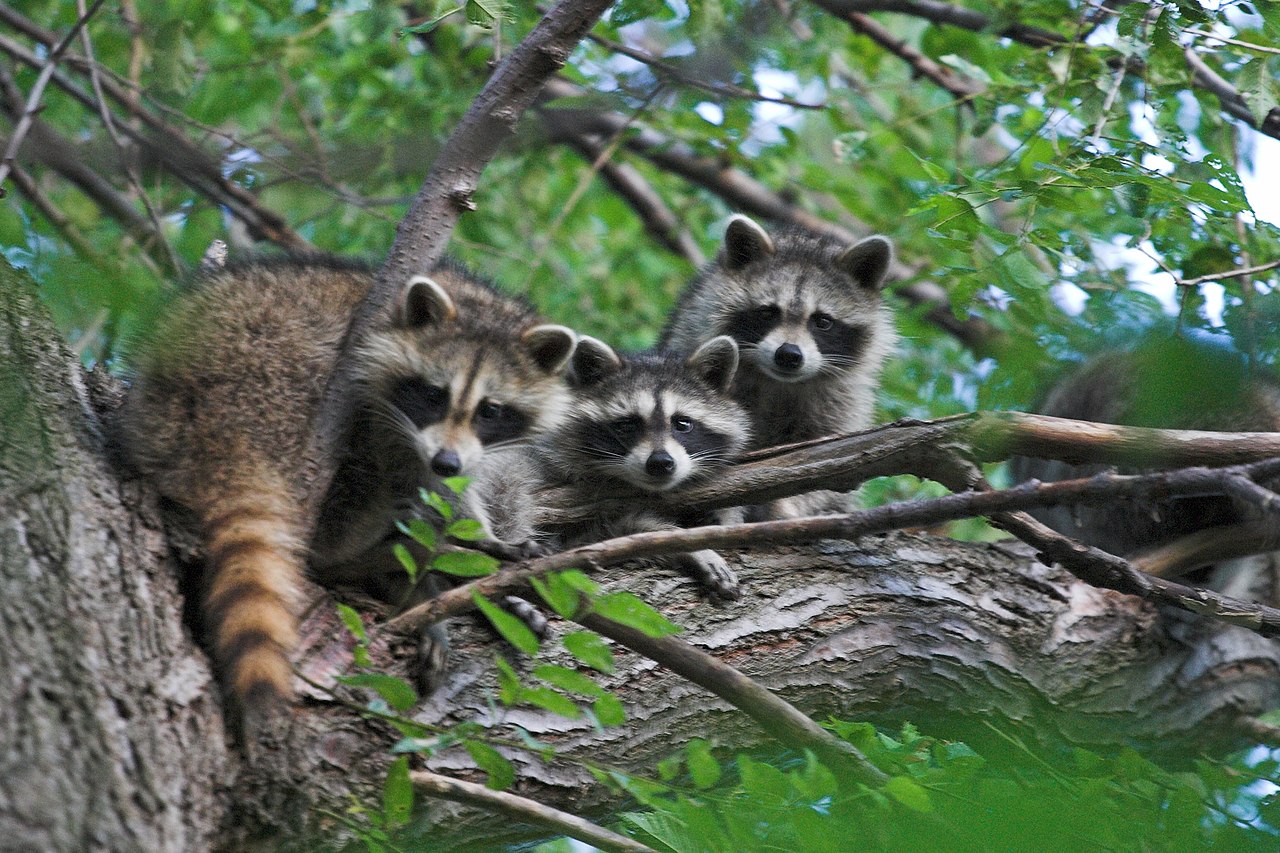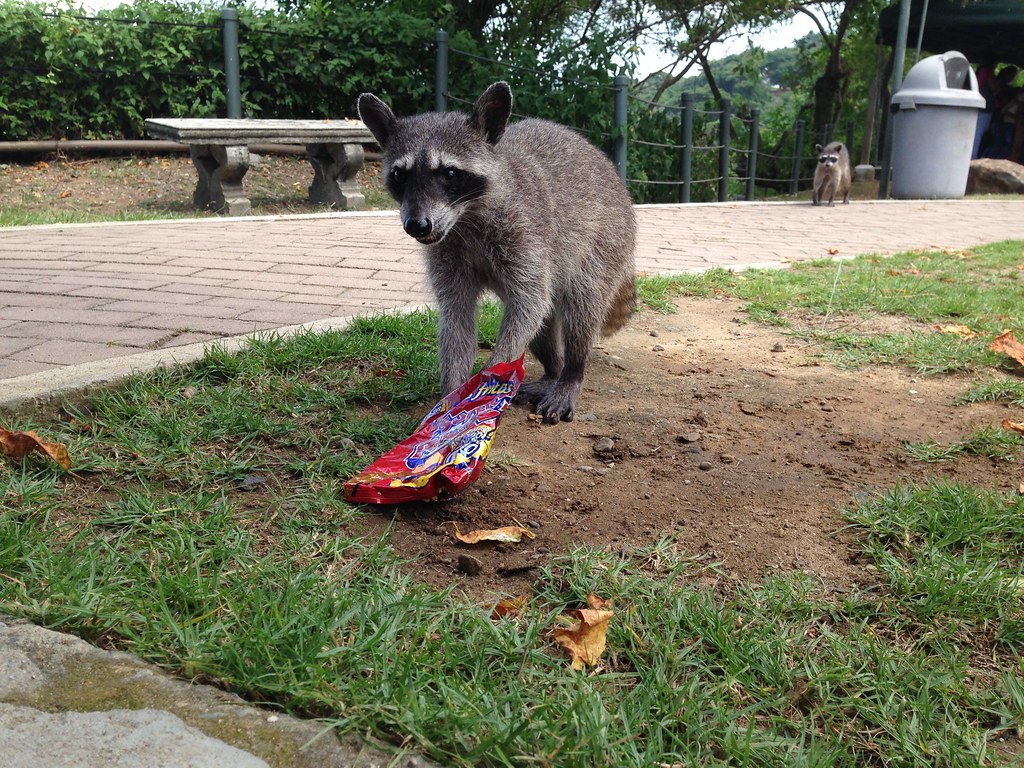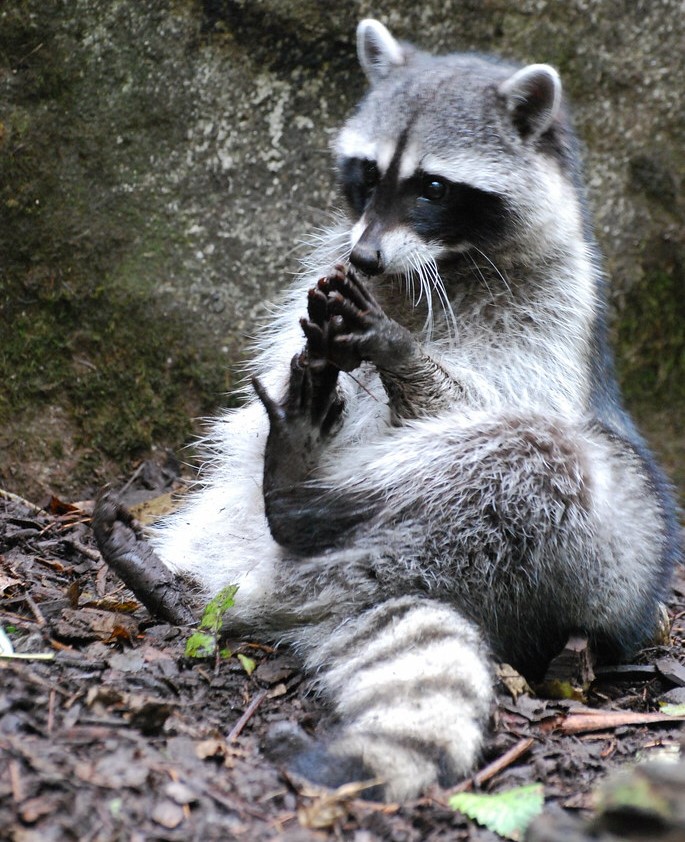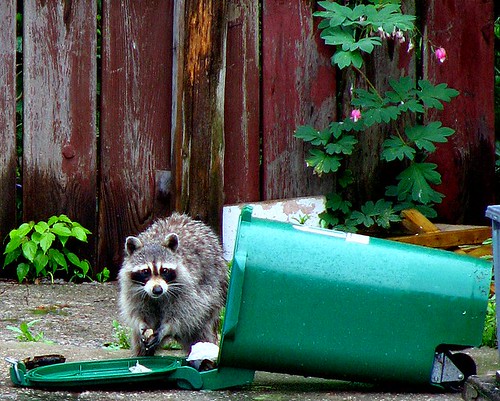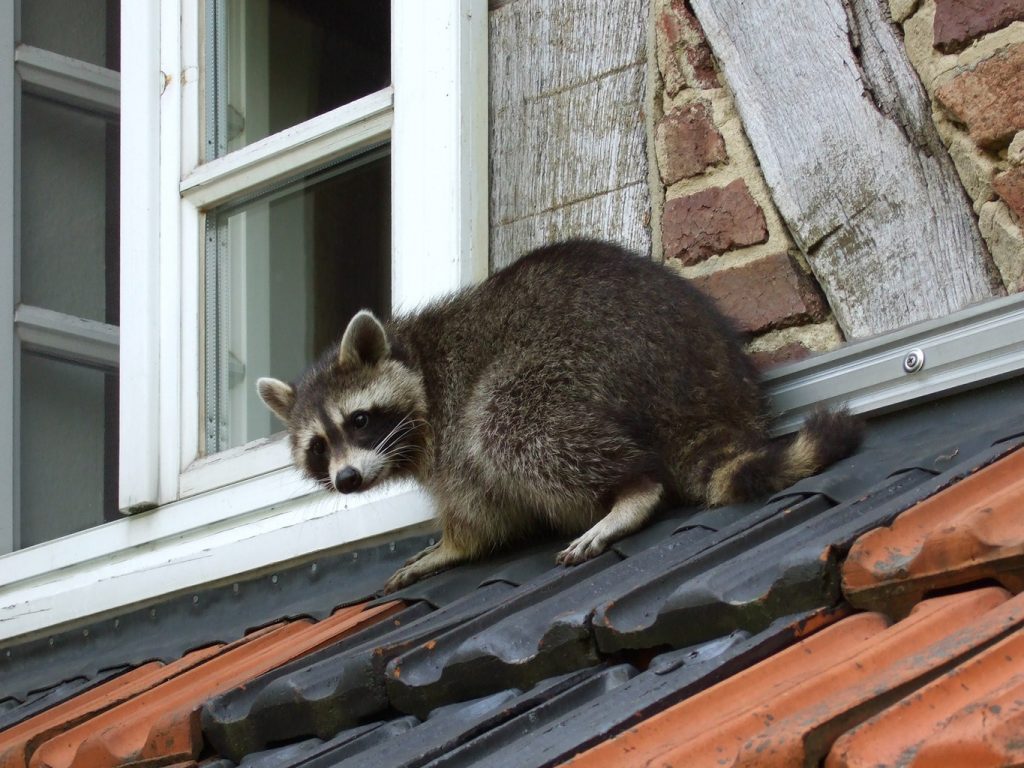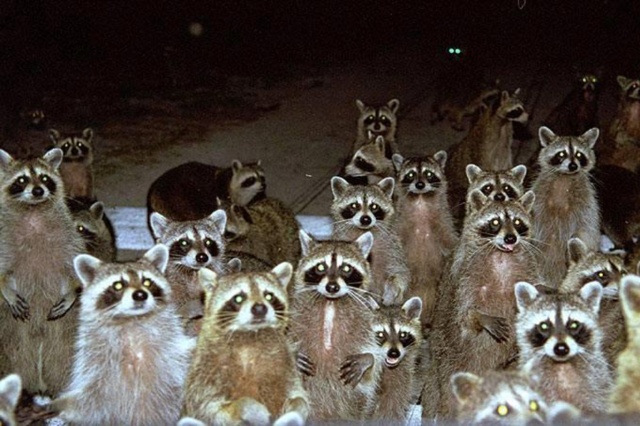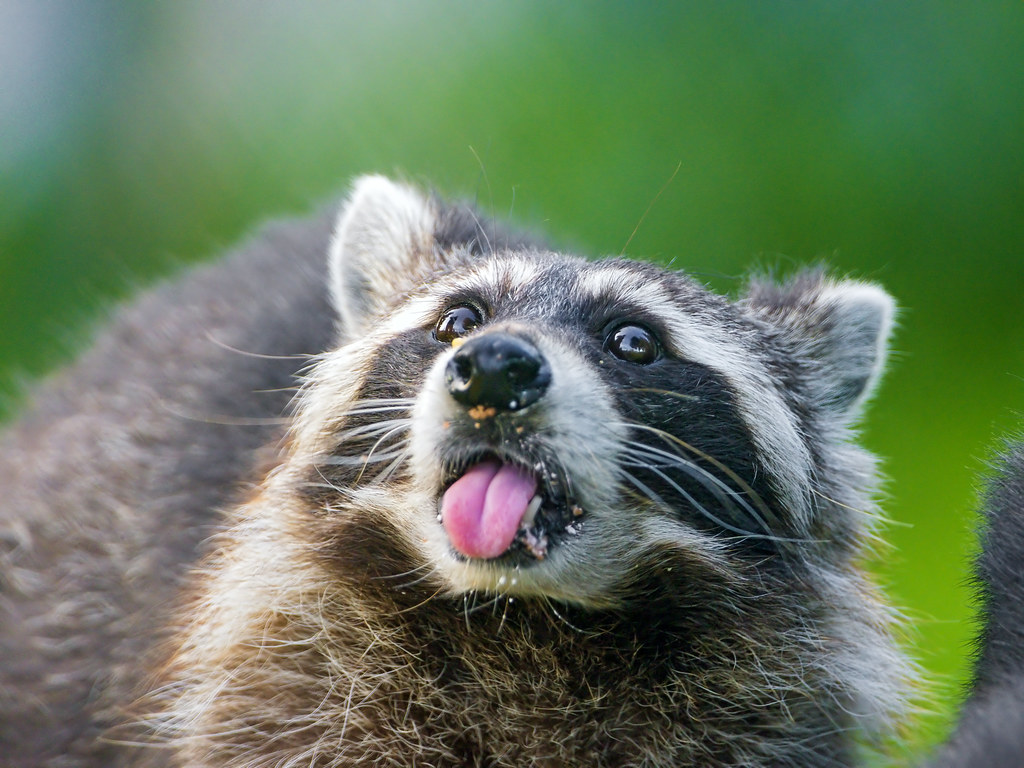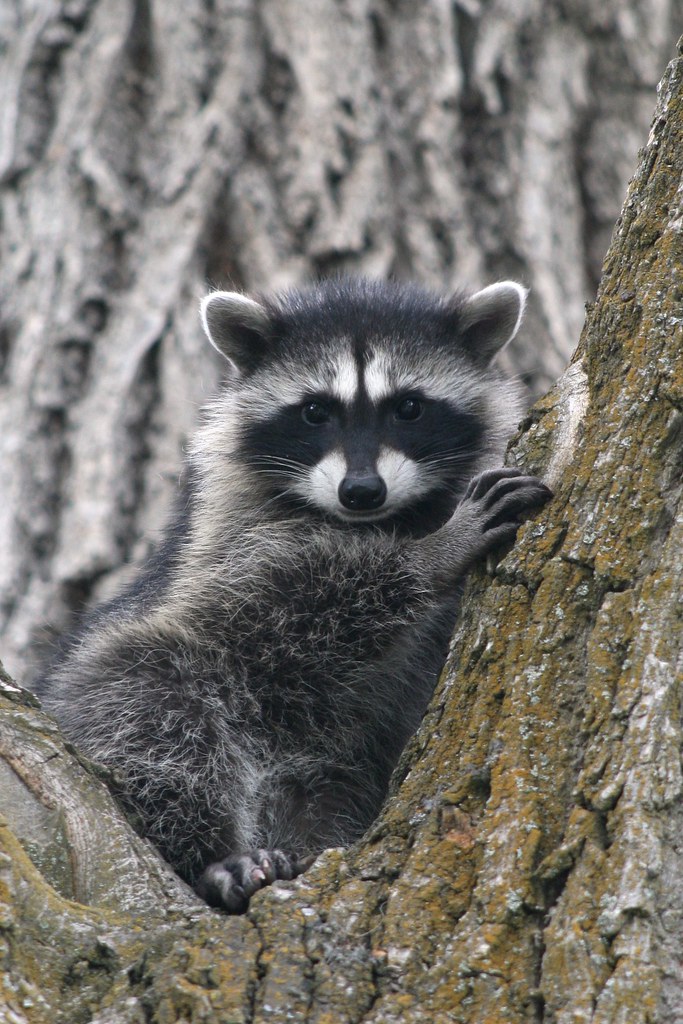Fluffy bandits a.k.a. trash pandas a.k.a Pyroton lotor a.k.a raccoons are infamous for raiding garbage cans, even those with weighted lids. They are reputed to eat almost anything.
They look like cute, cuddly bandits, but they can be quite fearsome when approached. (More about that later.)
What Do Raccoons Eat
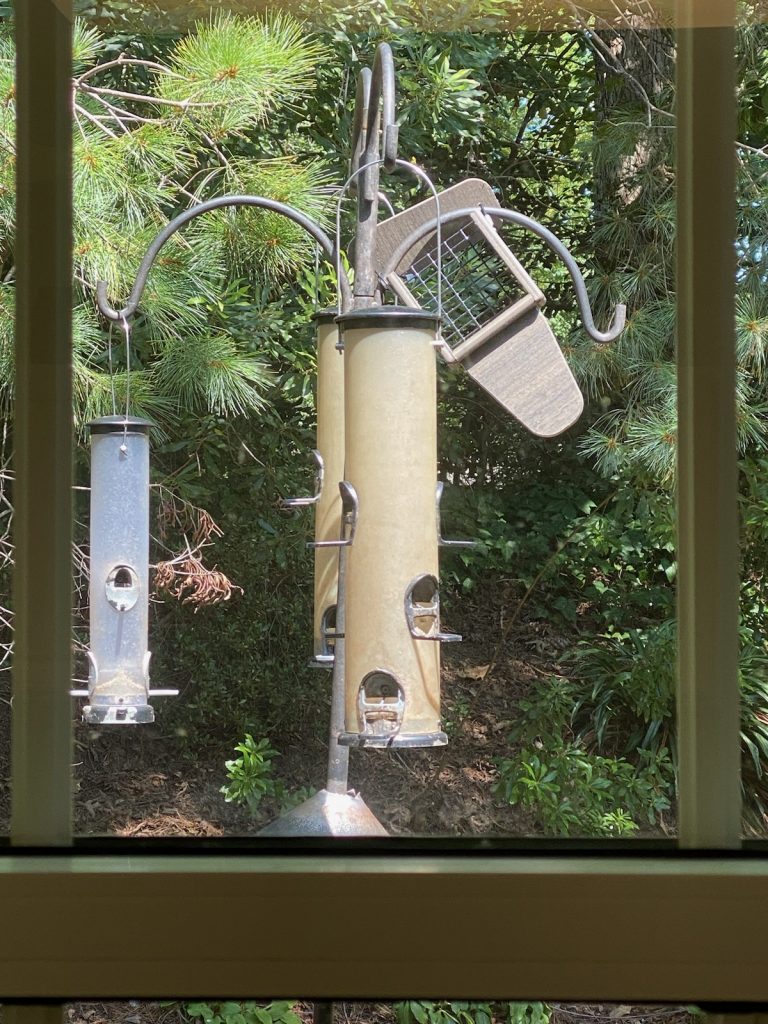
Raccoons are truly omnivorous, and in the wild they eat about 40% invertebrates, 33% plants, and 27% vertebrates.
More specifically, when it comes to meat, raccoons eat more invertebrates than vertebrates. Some of the raccoon’s favorites are frogs, fish, crayfish, insects, rodents and bird eggs. Their voracious appetites allows raccoons to help control the populations of some pests, like yellow jackets and mice. When food is scarce (or they’re feeling lazy), raccoons will scavenge human trash or eat roadkill.
For plants, they like cherries, apples, acorns, persimmons, berries, peaches, citrus fruits, plums, wild grapes, figs, watermelons, beech nuts, corn, and walnuts. And they raid bird feeders whether food is scarce or not!
In more urban environments, raccoons will eat pretty much anything.
In fact, urban raccoons suffer some of the same consequences as humans when they share the unhealthy parts of human diets. Their access to drive-thru dumpsters and grocery store bins provide raccoons with plenty of fried, sweetened, and highly processed foods. A research team in Canada has found that raccoons in urban areas have higher blood glucose levels and higher weight than those living in wildlife preserves.
Raccoons in Cultural History
Long before Europeans came to North America, raccoons played a vital role in the lives of Indigenous people who already lived here. Our names for these animals today reflects this history. The English name “raccoon” comes from the Powhatan word aroughcun, meaning “hand-scratcher.” Further south, the Nahuatl/Aztec word mapachtli led to the modern Spanish word “mapache” or “one that takes everything in its hands.”
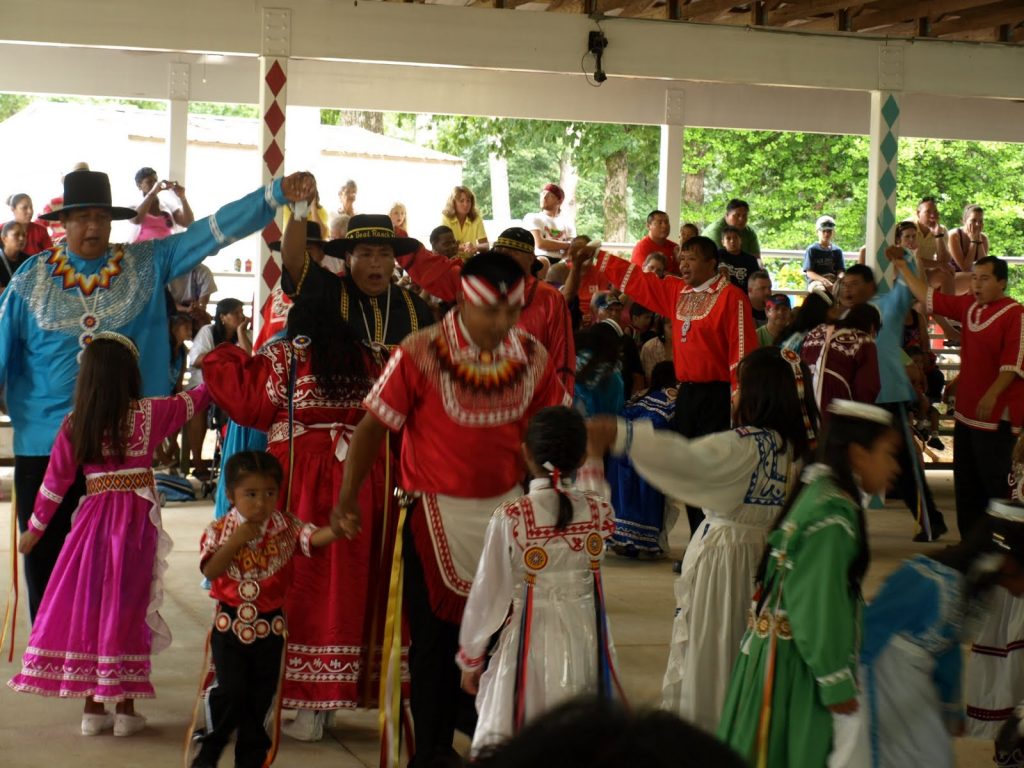
(photo from Grits-n-Soul)
Several tribes, including Muskogee Cree (Wahlakalgi or Wotkalgi), the Shawnee (Sha-pä-ta’), Chippewa (Esiban), the Monominee (Aehsepan), and the Chickasaw (Shawi’ Iksa’) have Raccoon clans.
In many mythologies, Raccoon played the part of a trickster spirit, spreading mischief or using cleverness to escape danger. The Abenaki told stories of how the raccoon Azeban tricked other animals into giving him food or lost a shouting match with a waterfall. A Menominee story of a raccoon tricking blind men served as a morality tale for children. A Seneca legend of raccoons disguised as humans illustrated their intelligence escaping from an evil magician.
Raccoons in the Cooking Pot
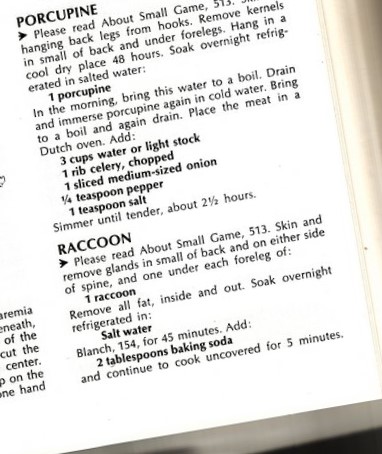
In addition to starring in many American stories, raccoons have also starred in the American diet! Until the middle of the 20th century, people commonly trapped and ate raccoon along with many other small game animals that adapted to survive near humans.
Raccoons require very clever traps to outwit their nimble paws. According to historian Michael Twitty, enslaved people from West Africa adapted traps they had used for grasscutters, a West African bush rodent, to catch raccoons. Those traps were nearly identical to the traps Native Americans had been using to catch raccoons for centuries. The cooking methods both groups used for raccoon meat also greatly resembled West African culinary traditions.
In addition to providing people with a ready source of protein, hunting and trapping raccoons also helped to control the population of animals that would otherwise eat crops. Selling pelts also brought in some extra income. In some places, particularly in the North where raccoon fur is thicker, raccoon meat for the table was more of a byproduct of the practice of selling pelts. Mark Twain listed raccoon as one of the foods he missed most while traveling in Europe in the 1870s.
At one point, discerning consumers could find raccoon meat on the menu from cookbooks in Colorado to fancy restaurants in Maine. The spread of factory farming in the 20th century made beef, chicken, and pork more affordable and more popular in the American diet. There are some places where you can still find raccoon in the kitchen. I hear the best meat is in the hind-quarters.
Habitat (Natural and Otherwise)
Raccoons are very adaptable, living in a wide range of climates and habitats. They live quite happily in forests, marshes, prairies, and cities. Historically, raccoons ranged from Central America all the way up to what is now southern Canada. They typically make their dens in trees or caves, though they will also make homes in barns, abandoned vehicles, and other human-made locations.
Raccoons have made themselves right at home in Germany, much to the dismay of German homeowners and wildlife control. Back in the early 20th century, a few people in German started raising raccoons for their fur. Bombs struck one of these farms during World War II, releasing dozens of raccoons into the surrounding countryside. In 1934, forestry officials released several pairs of raccoons into the wild in an attempt to increase wildlife diversity. Today, there are as many as a million of these waschbären (“washing bears”) in Germany, devastating local bird and turtle populations, destroying vineyards, and causing traffic accidents. German raccoons seem to be especially attracted to stealing beer, wine, and hard cider, getting noticeably drunk at festivals or breaking into kitchens and targeting beer.
Germany isn’t the only place in Europe where raccoons are making a nuisance of themselves. A similar story of fur farms and war has caused an invasion of raton laveur (“little washing rats”) in France. Authorities in Madrid called for a raccoon culling in 2013 “to control and eradicate this unwelcome invasive species” that has made itself unwelcome in Spain. Scotland lists raccoons as one of the top 50 invasive, non-native species. The European Union has classified Pyroton lotor, the North American raccoon as an invasive species and banned their sale and import.
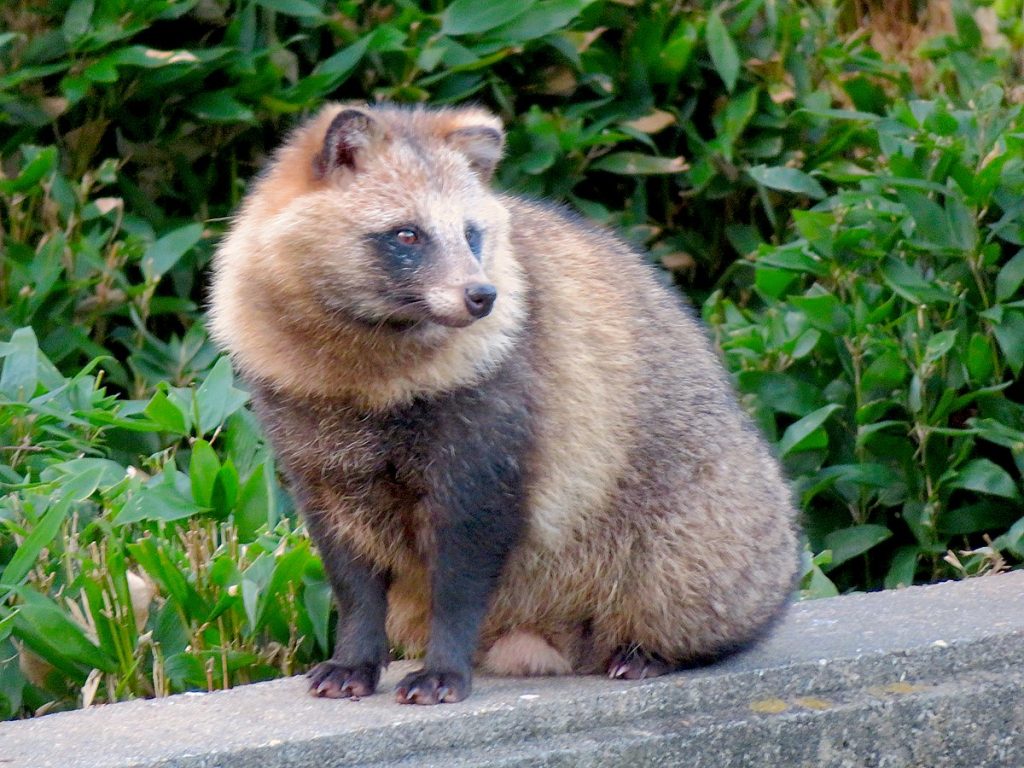
In 1977, the anime Araiguma Rasukaru, telling the story of a man who adopted a pet raccoon, became a massive hit in Japan. Fans of Rascal the Raccoon began importing at least 1,500 raccoons a month to Japan. After realizing that raccoons don’t make good pets, many people then released them into the wild. The descendents of those raccoons today have spread to 42 of the 47 prefectures in Japan. They destroy crops, damage historic shrines, spread disease, and steal from fish and produce vendors. North American raccoons have begun to displace native Japanese “raccoon” dogs, tanuki.
Cohabitation with Humans
Though raccoons are more than happy to live in human areas, they can be vicious when defending themselves or their kits. But generally, even if people try to scare them off with noise or lights, raccoons are bold and simply back off to return later.
Humans should be particularly cautious of approaching raccoons in North America because they are common carriers of rabies, roundworms, and leptospirosis, according to The Humane Society. Having a raccoon as a pet is not recommended, even if you’re the President.
In 1926, Vinnie Joyce in Mississippi sent a raccoon to the White House, promising the Coolidges that it had “a toothsome flavor” and would make a wonderful Thanksgiving dinner. Rather than eating the furry gift, Calvin and Grace Coolidge named the raccoon Rebecca, gave her an embroidered collar, and invited her to participate in the White House Easter Egg Roll. At the end of Coolidge’s presidency, Rebecca went to live in Rock Creek Park in Maryland.
Physiognomy
Raccoons are round, fuzzy creatures with bushy tails and a black fur mask around their eye area. They are about as big as small dogs, about 23 to 37 inches and 4 to 23 lbs., according to National Geographic.
They are adaptable and use their dexterous front paws and long fingers much like human hands to climb and manipulate things. These front paws are hyper-sensitive, particularly when wet. Raccoons in the wild use this extreme sensitivity to search for food underwater from the banks of streams.
Even in captivity, raccoons will often rub their food underwater before eating it. Scientists believe that, rather than washing their food, raccoons are softening the vibrissae on their paws, allowing them to feel their food more carefully to ensure it is safe.
With their clever paws and intelligent brains, raccoons can open locks, figure out traps, solve puzzles, and get into almost anything containing food. In studies, raccoons successfully opened complex locks 11 out of 13 times and then remembered the solutions when presented with the same locks later.
Raccoons live around 2 to 3 years in the wild, though raccoons in captivity can sometimes live as long as 20 years. But they are always with us.

Baby raccoons are called kits or cubs and are usually born in the early summer. Females have one to seven offspring and are only pregnant for 2-2.5 months. A mother and her baby raccoons are called a nursery.
At birth, raccoon kits are blind and deaf. For the first two months of their lives, babies live in their den and nurse from their mothers. At 12 weeks, they will start to roam away from their mothers for whole nights at a time. They become completely independent at 8 to 12 months of age.
Coonpath Road is near the town where I grew up. The implication that coons follow a circuit or path is accurate. They are active from dusk to dawn, and when they raid my bird feeder, it is near the same time every night.
Bottom Line: Raccoons are fascinating creatures, but best observed from a distance.
